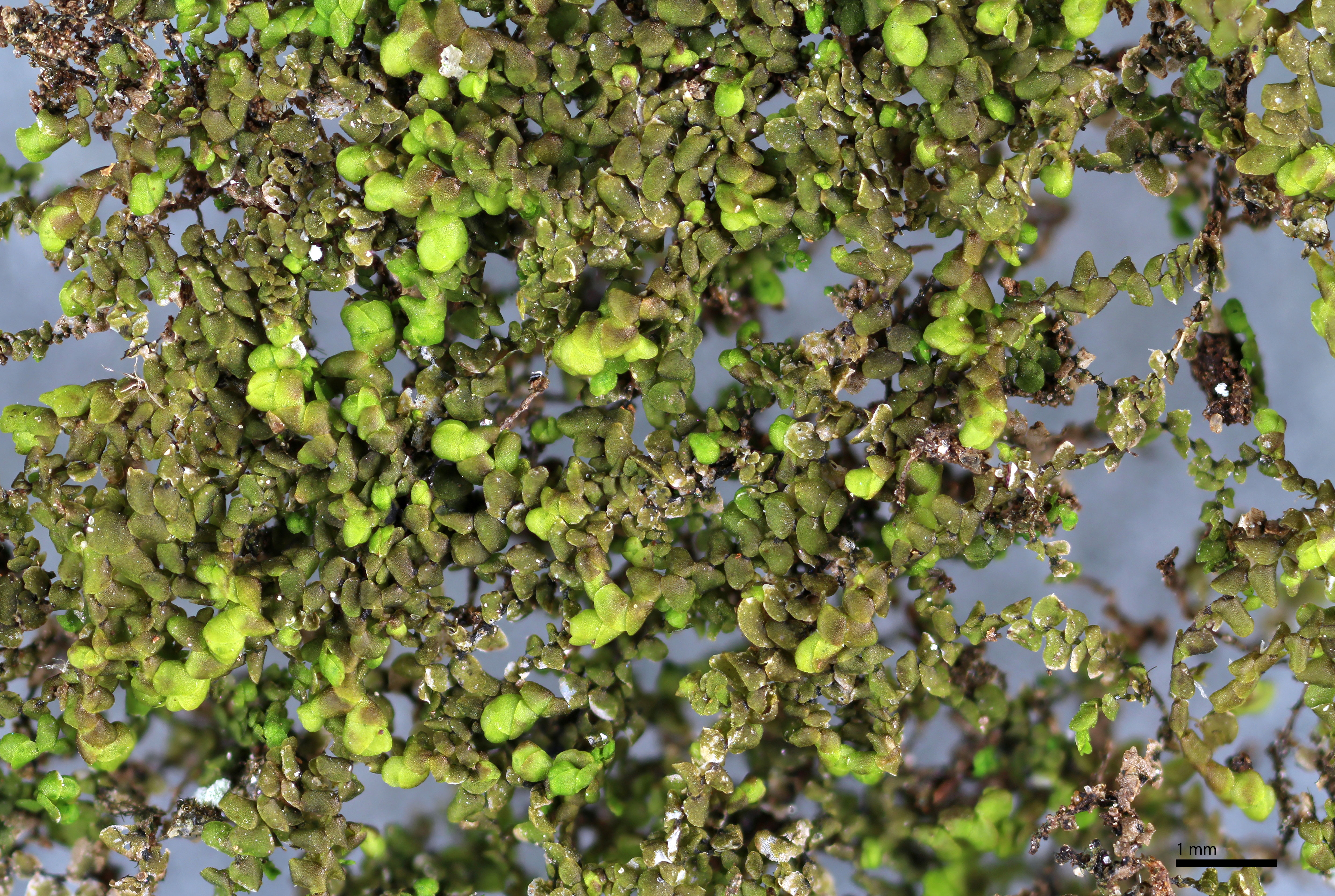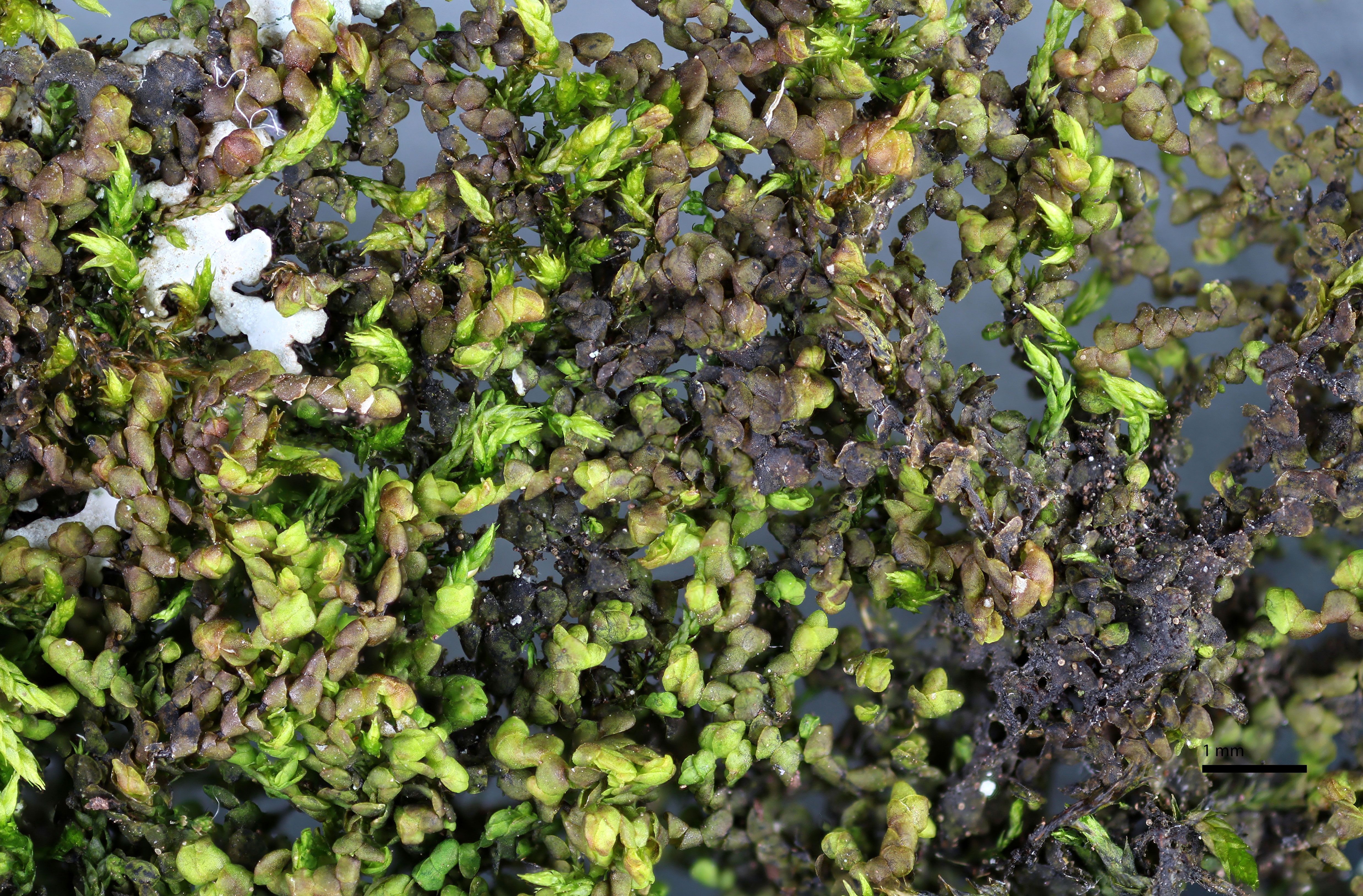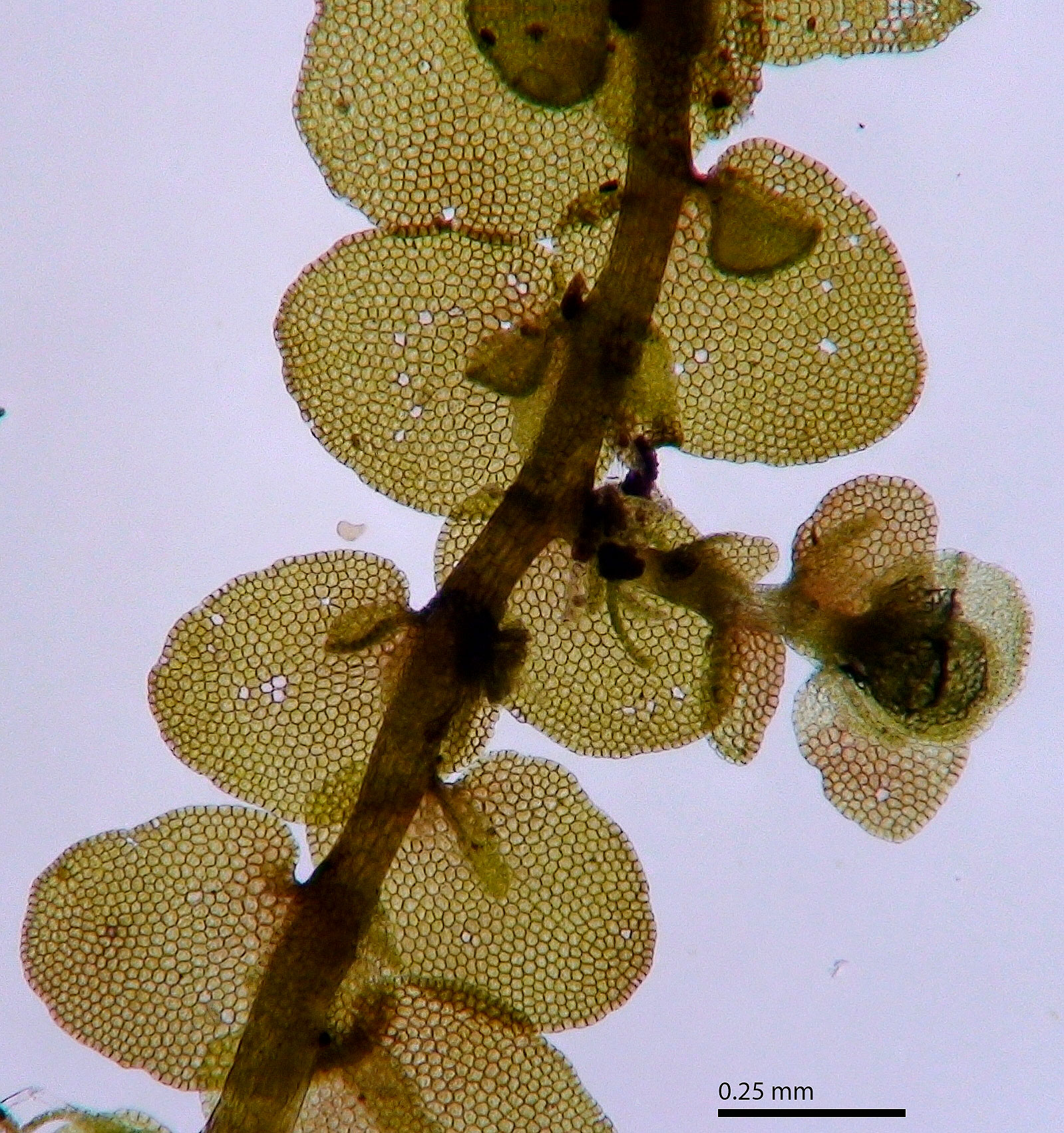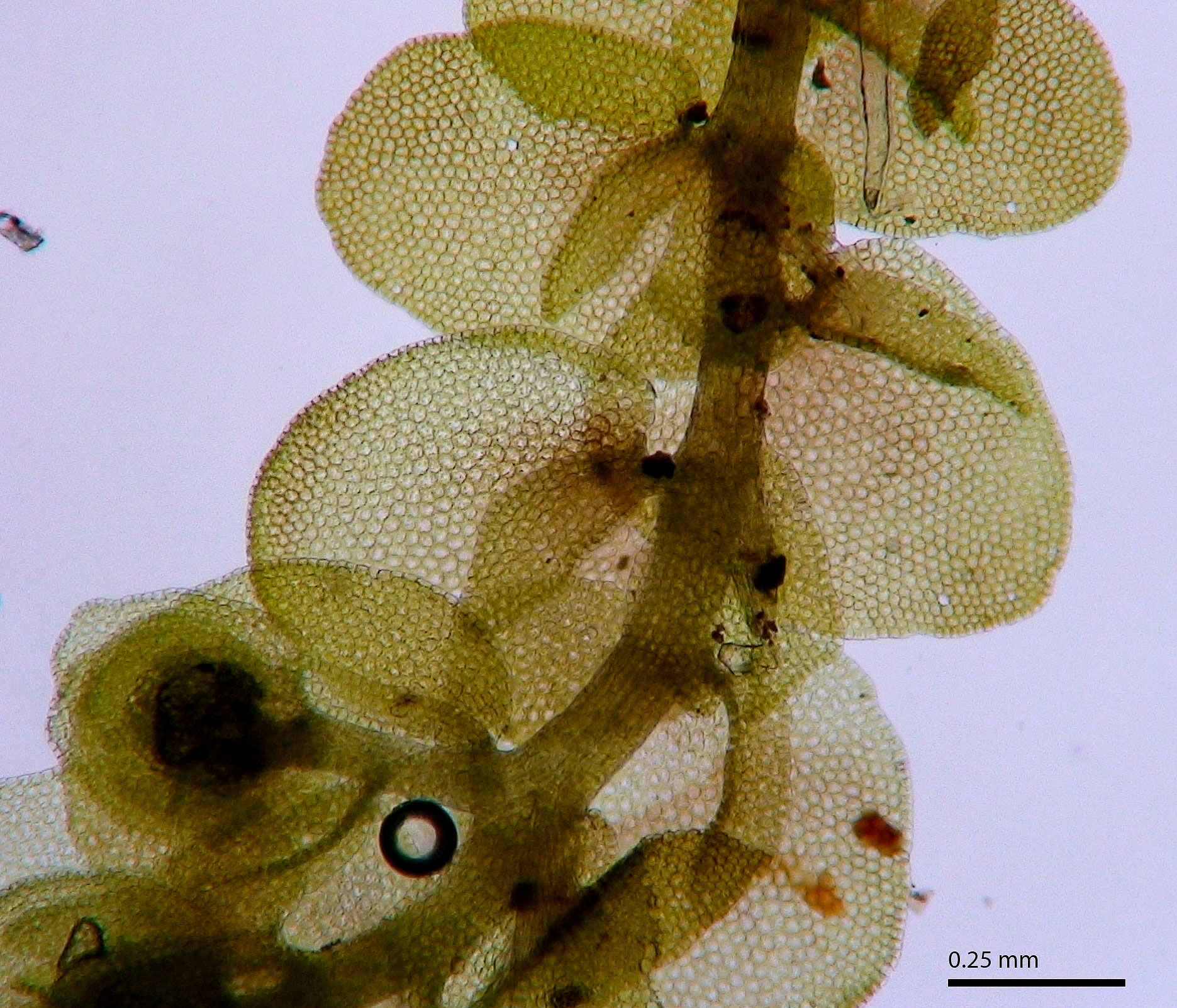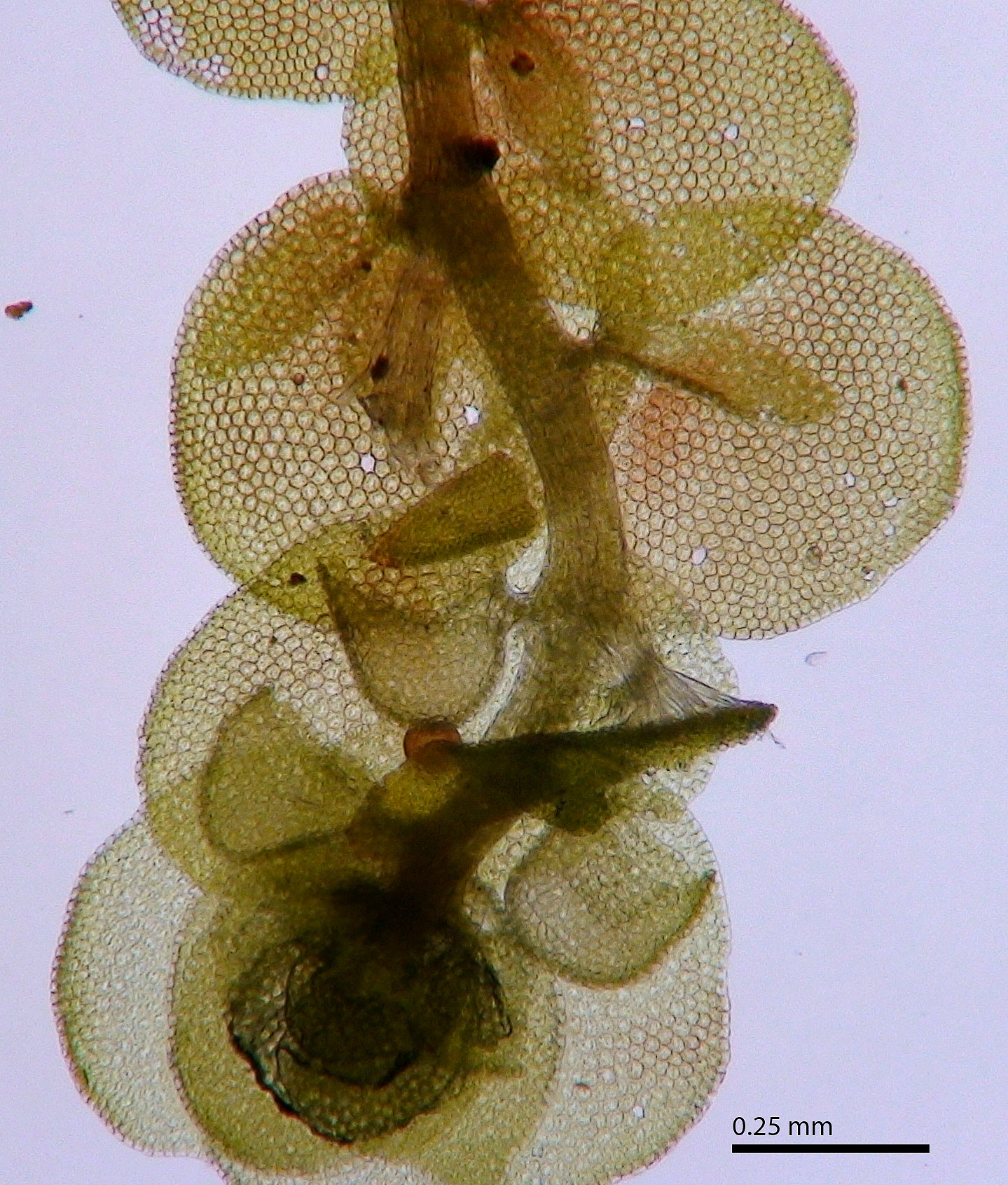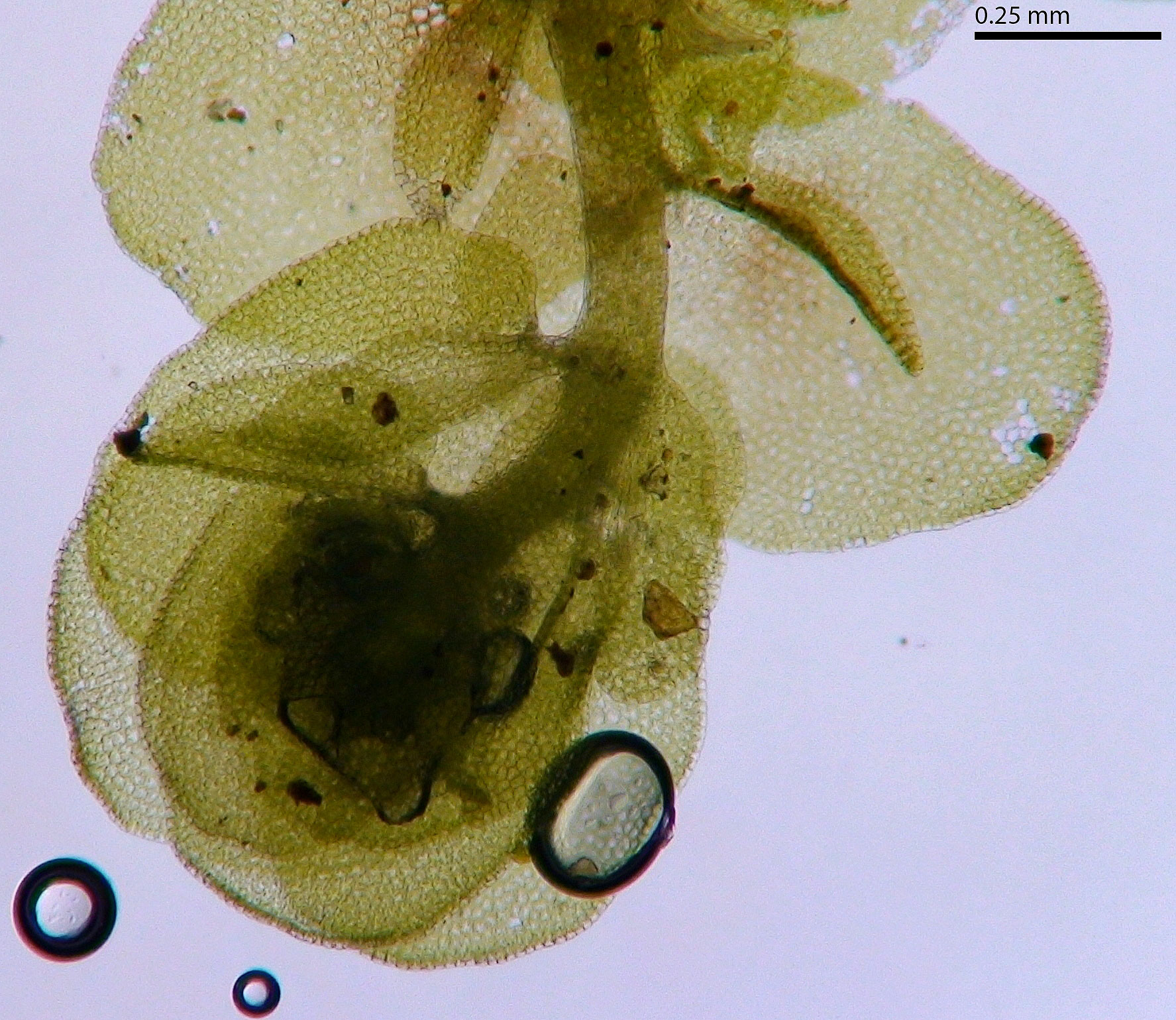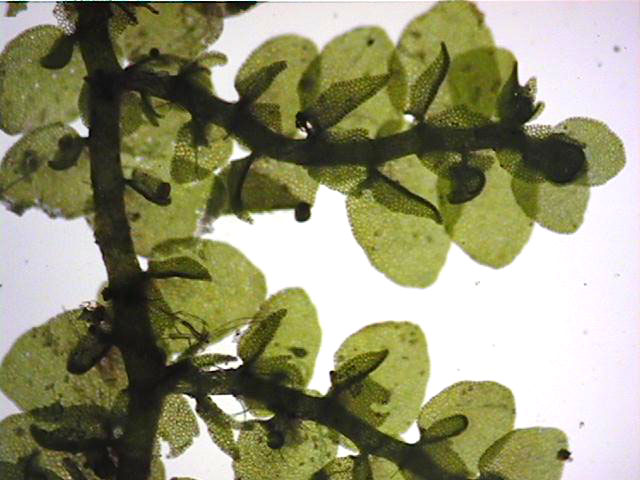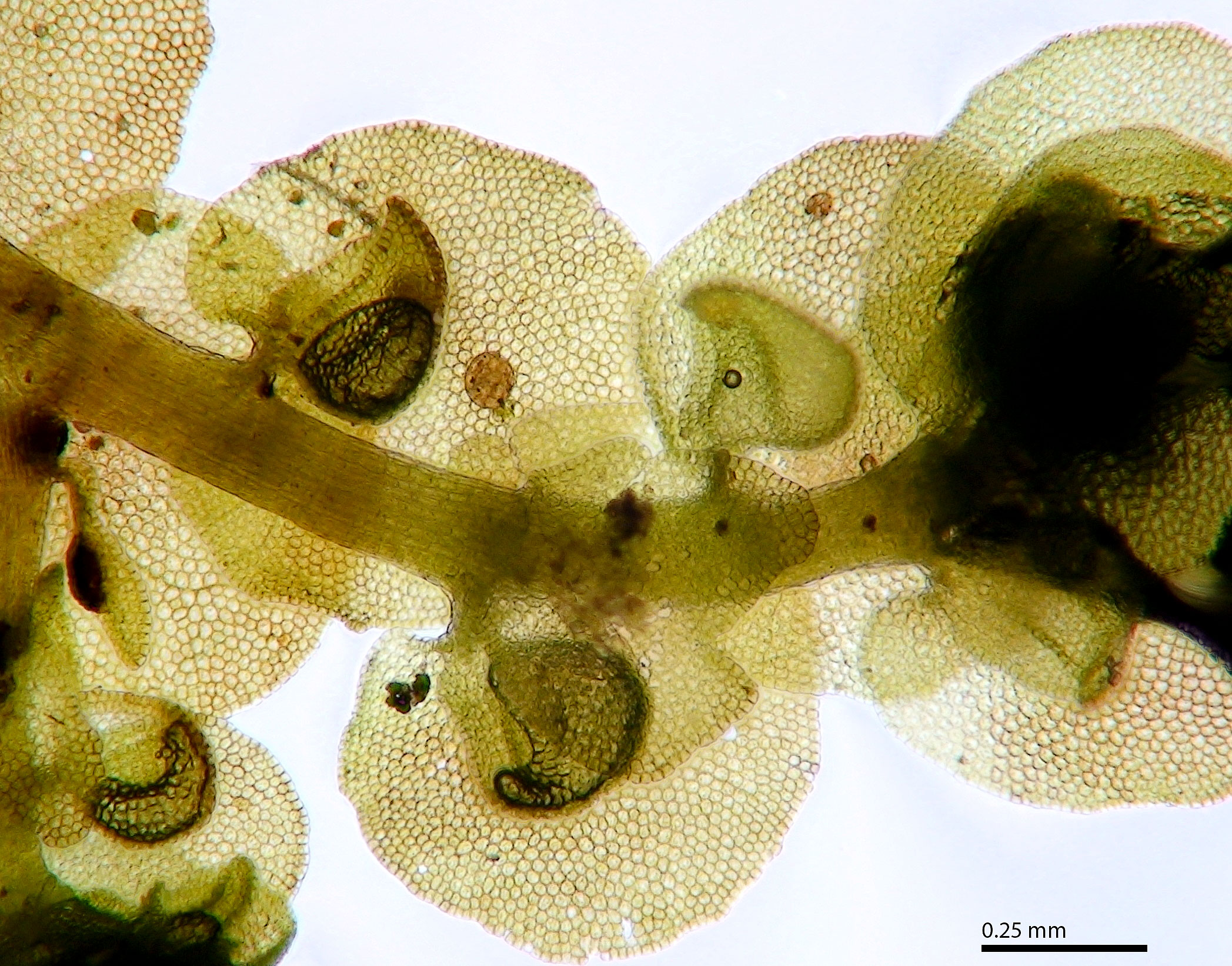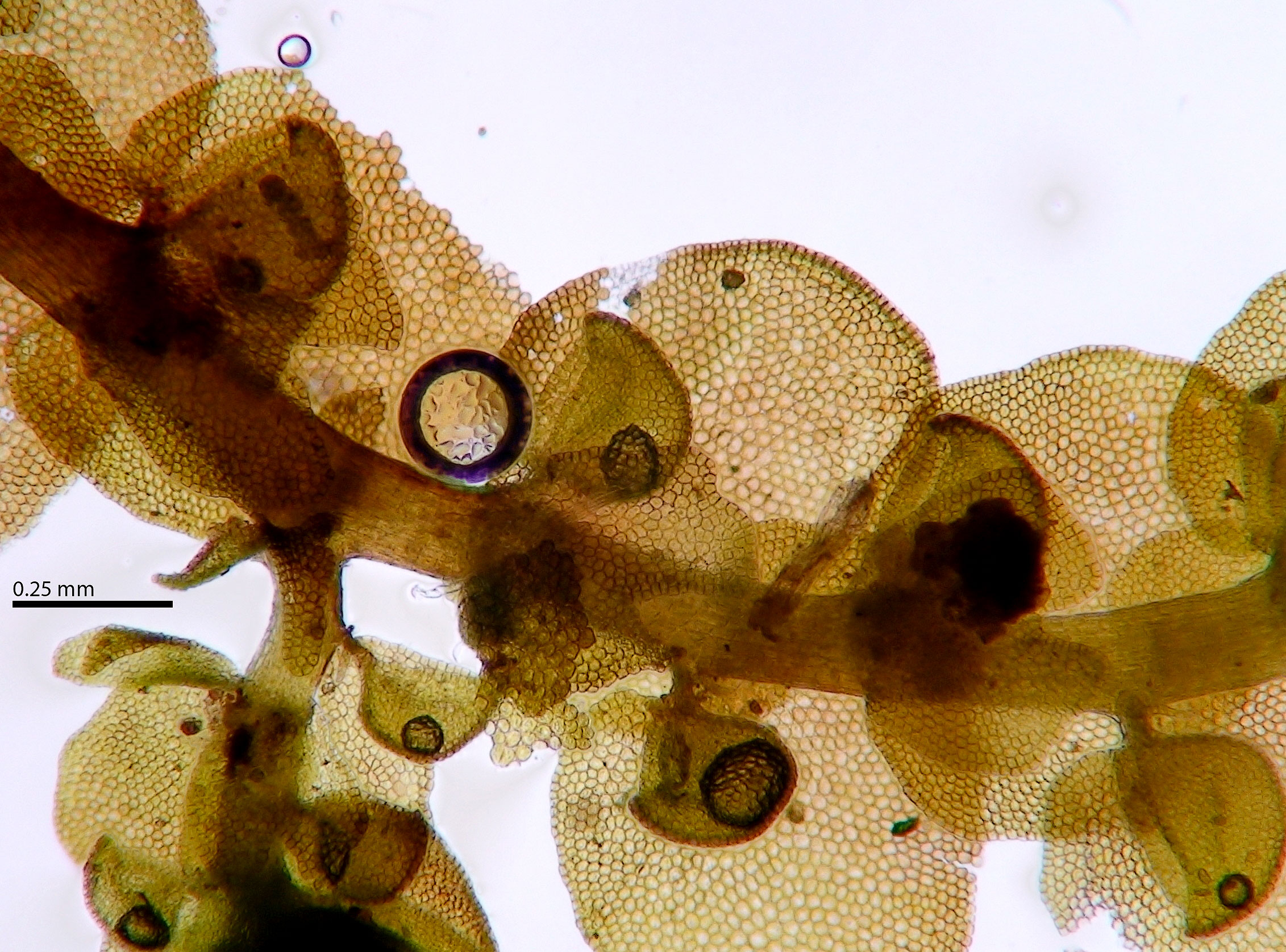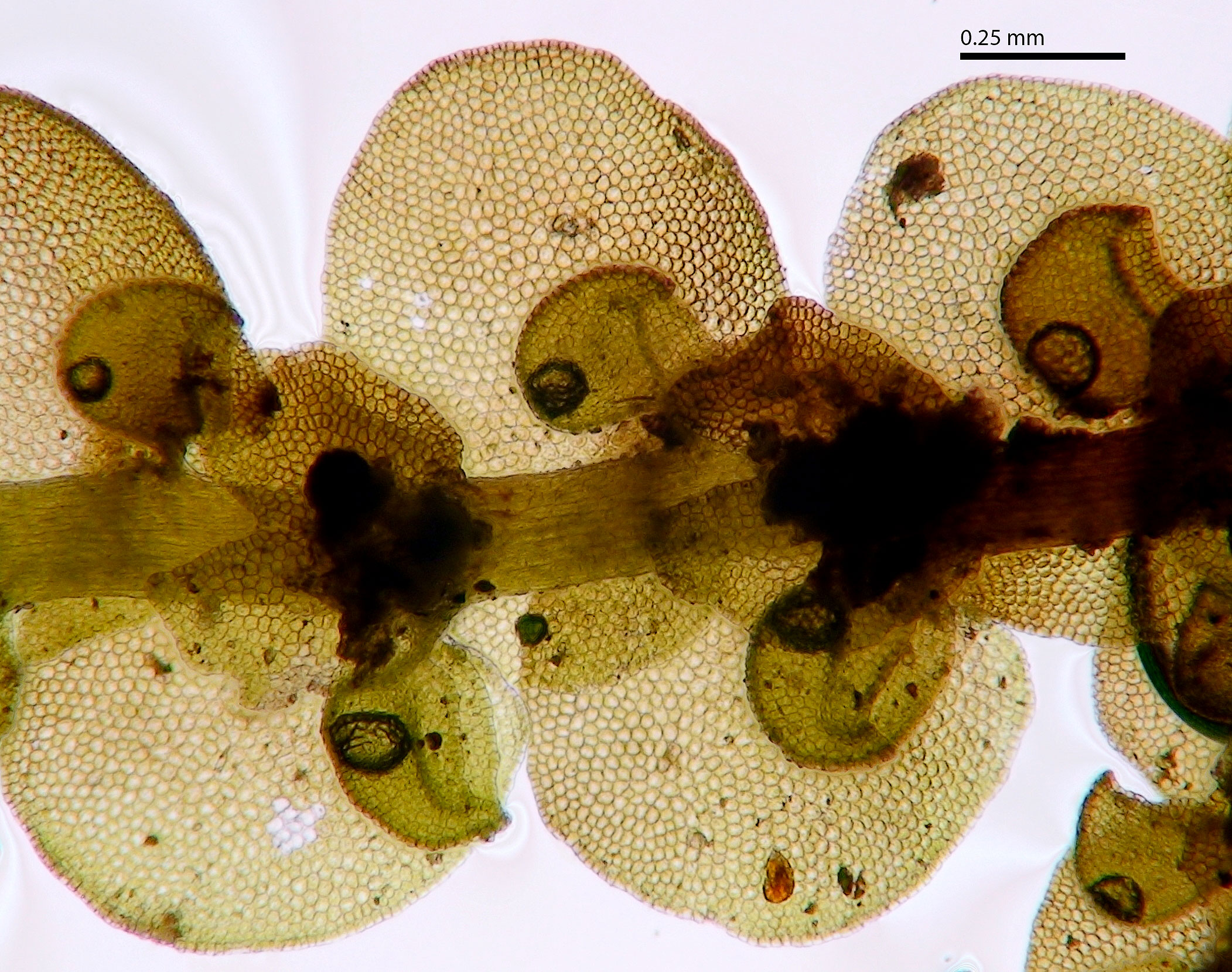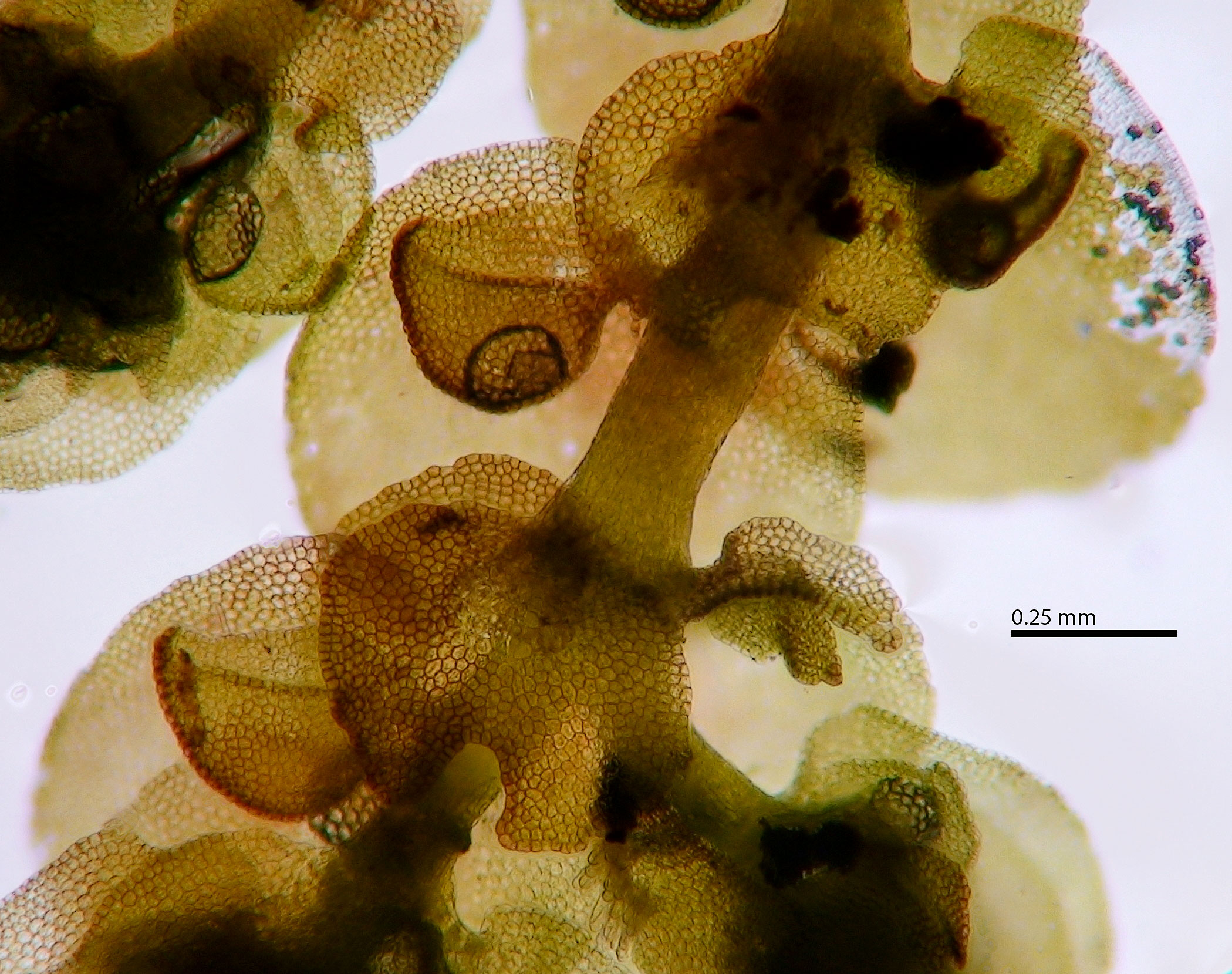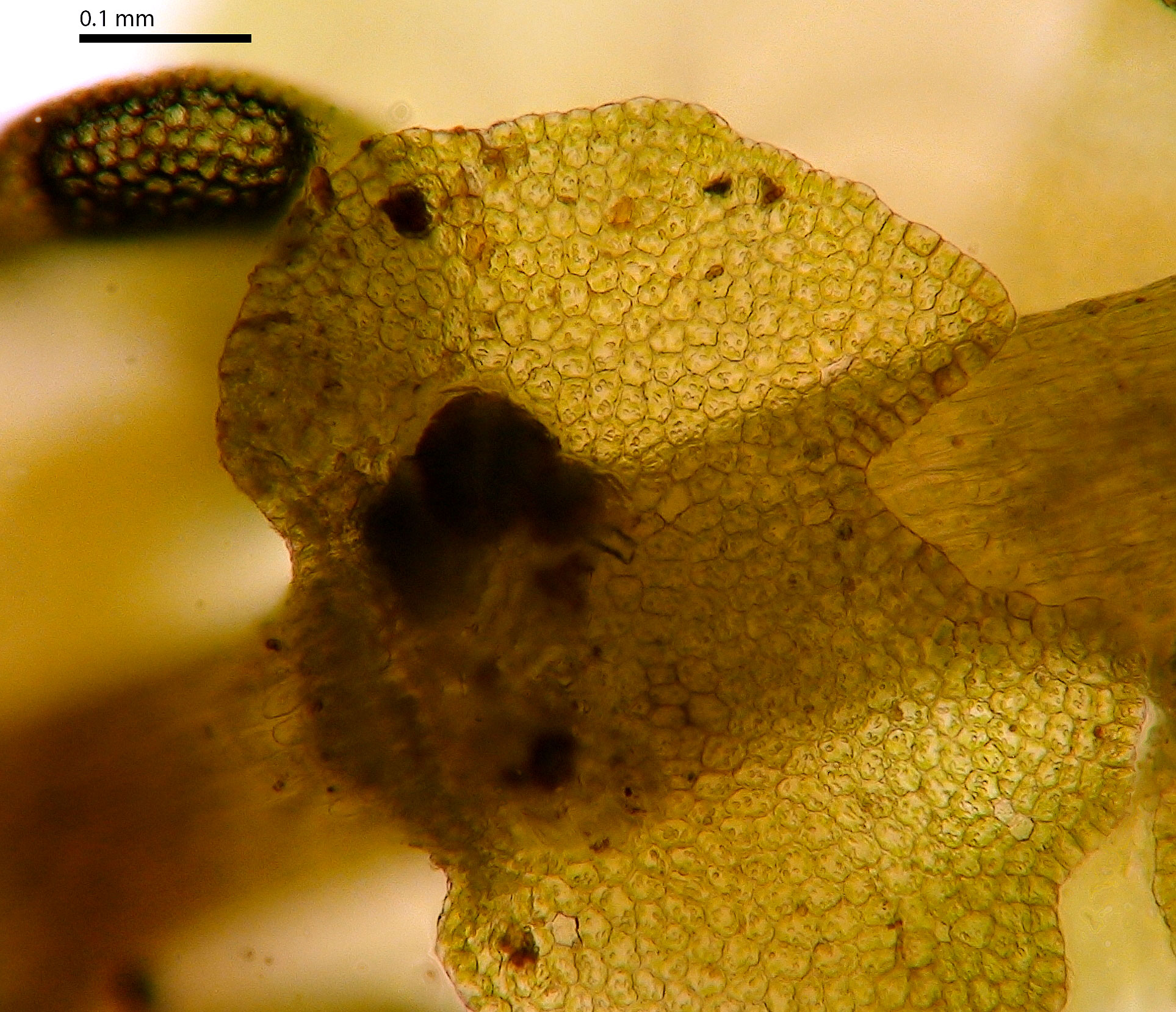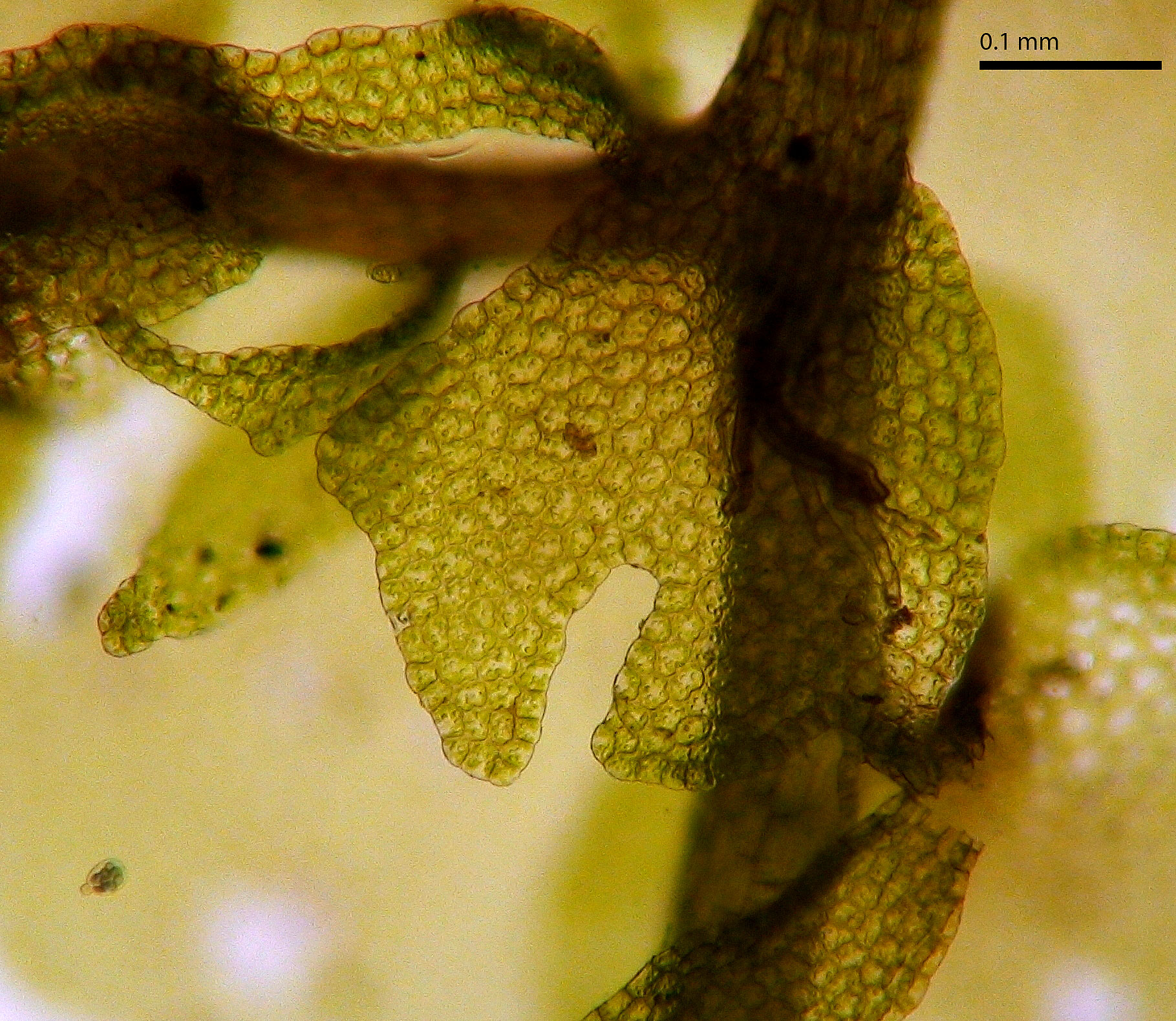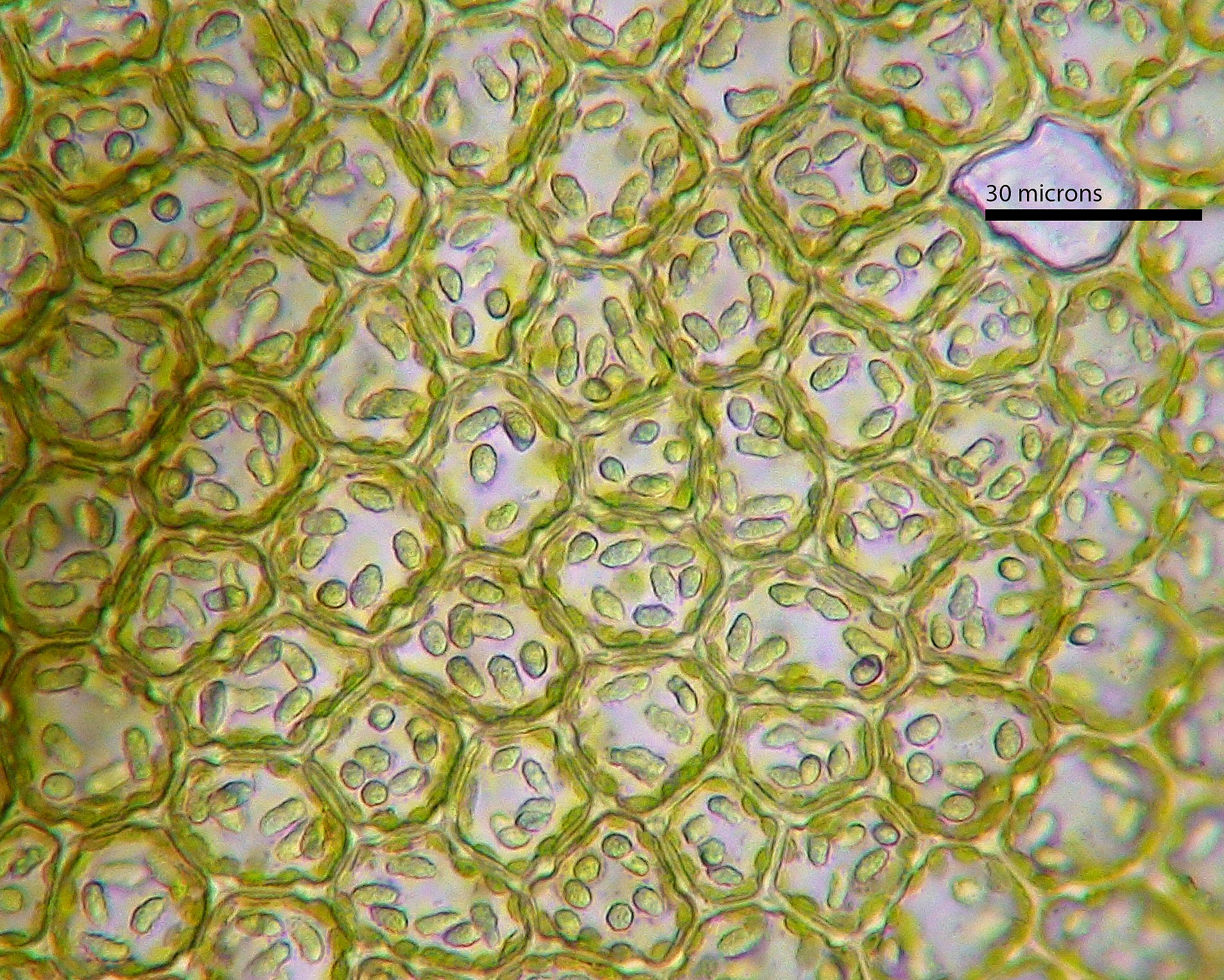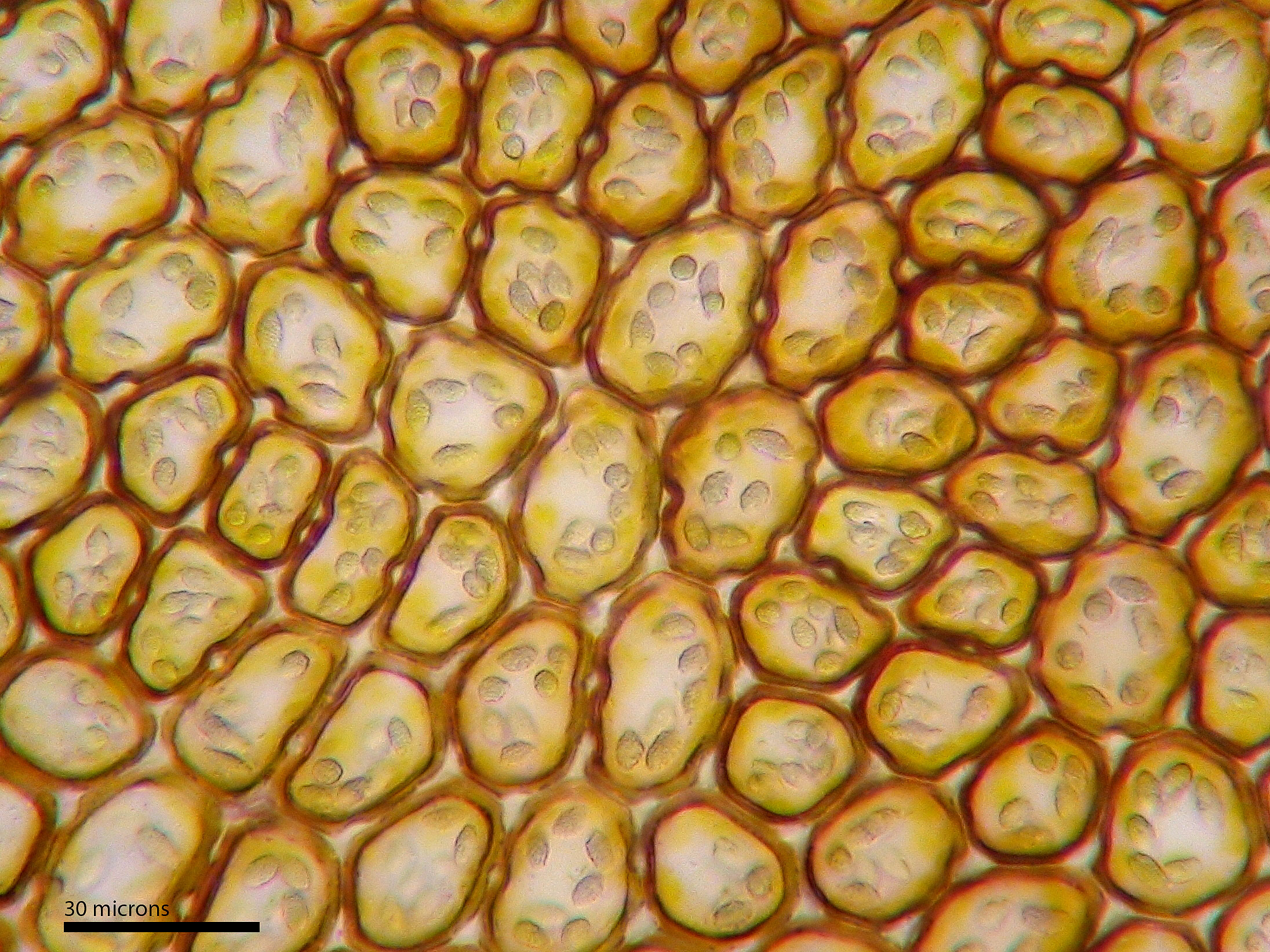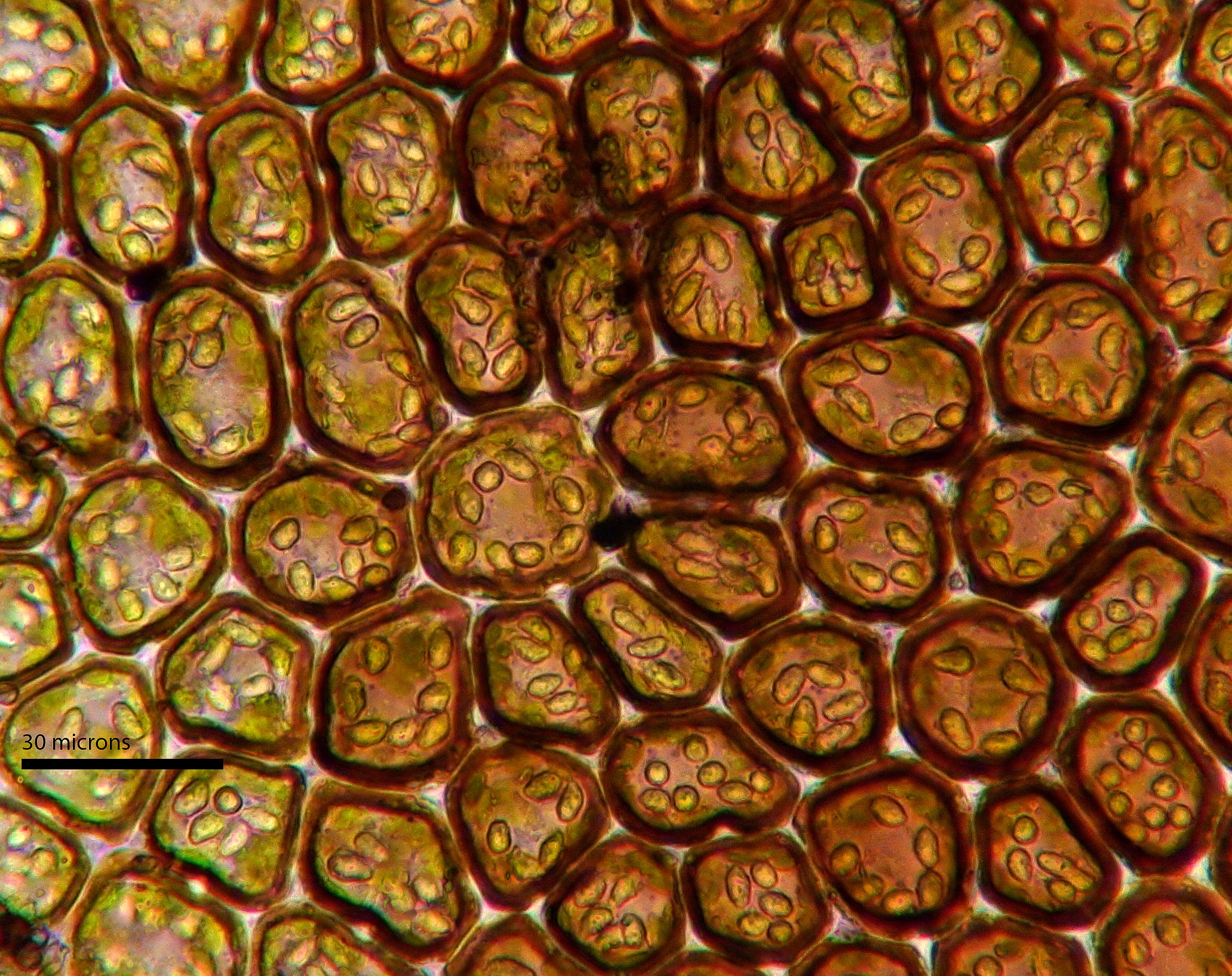Frullania riparia Hampe ex Lehm.
Family: Frullaniaceae
Synonyms
none recent
NatureServe Conservation Status
G4G5
Distribution
Europe. North America. Mexico. U.S.A. Arizona to Minnesota, New England, south to Alabama
Habitat
Most frequently on dry, basic rocks in shaded conditions often in otherwise exposed sites. Whether plants occur on trees in the Southern Appalachians is not known. Schuster (1992) does mention occurrences (none specifically Southern Appalachian) on the following tree species when found in vicinity of epipetric populations: Tilia, Fraxinus americana, Taxodium distichum, Ostrya.
Brief Description and Tips for Identification
Shoot width: to 1-1.7 mm. Color: green to brownish. Cell walls in leaf lobe: with intermediate thickenings. Dorsal lobe insertion: cordate. Lobules: about as wide as long when inflated
Dioicous. Perianths unknown, androecia unknown. The only sexual plants known bear gynoecia without perianth development.
Reproduction and dispersal is apparently accomplished by occasional and sporadic "small leafy propagula from leaf surfaces" (Schuster 1992, p. 177).
On the basis of explanate lobules one might confuse F. inflata with F. riparia (they often occur together on rock). The intermediate wall thickenings, cordate base of the dorsal lobe, and dioicous condition of F. riparia should eliminate confusion. The large underleaves and general aspect of F. riparia may suggest F. ericoides which differs in the dried state in having leaves wrapped tightly around the stem.
Salient Features
- Dioicous
- Explanate lobules long, extending to over half the width of the lobe.
- Inflated lobules broad and short
- Large underleaves
- Cell walls typically with intermediate thickenings
- Rather distant leaf lobes (not closely overlapping)
- Typically restricted to rock
